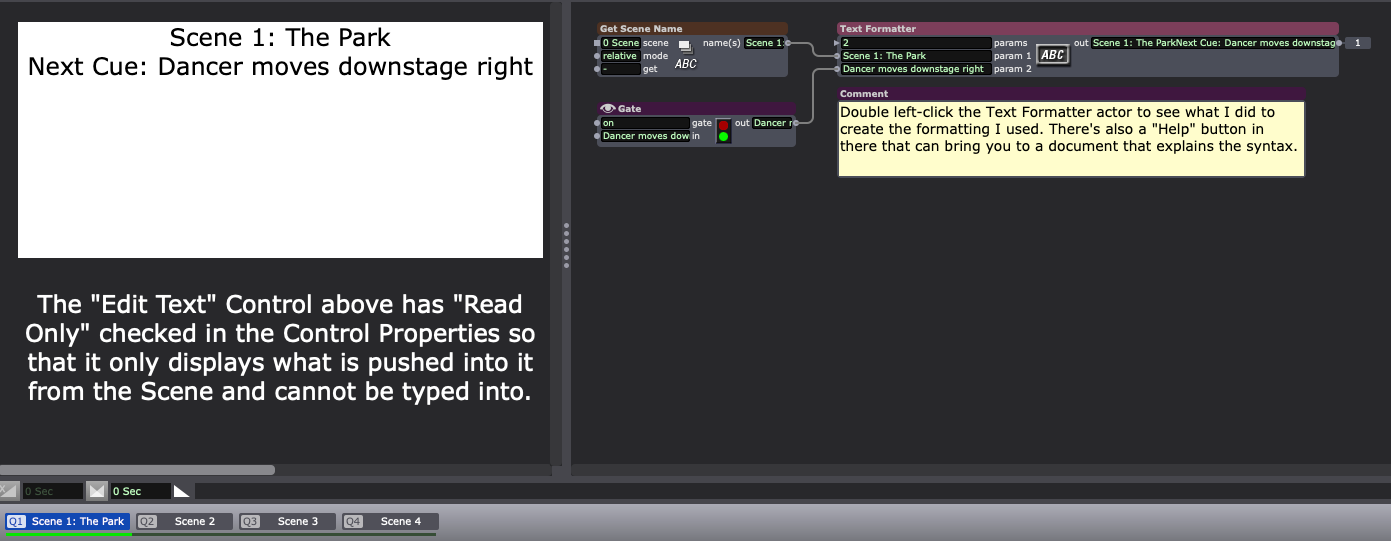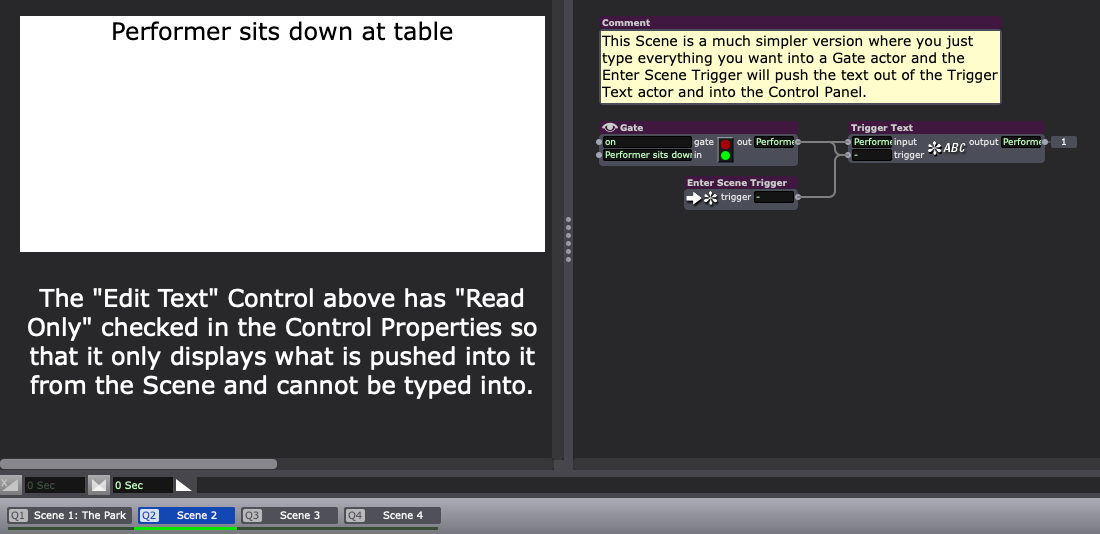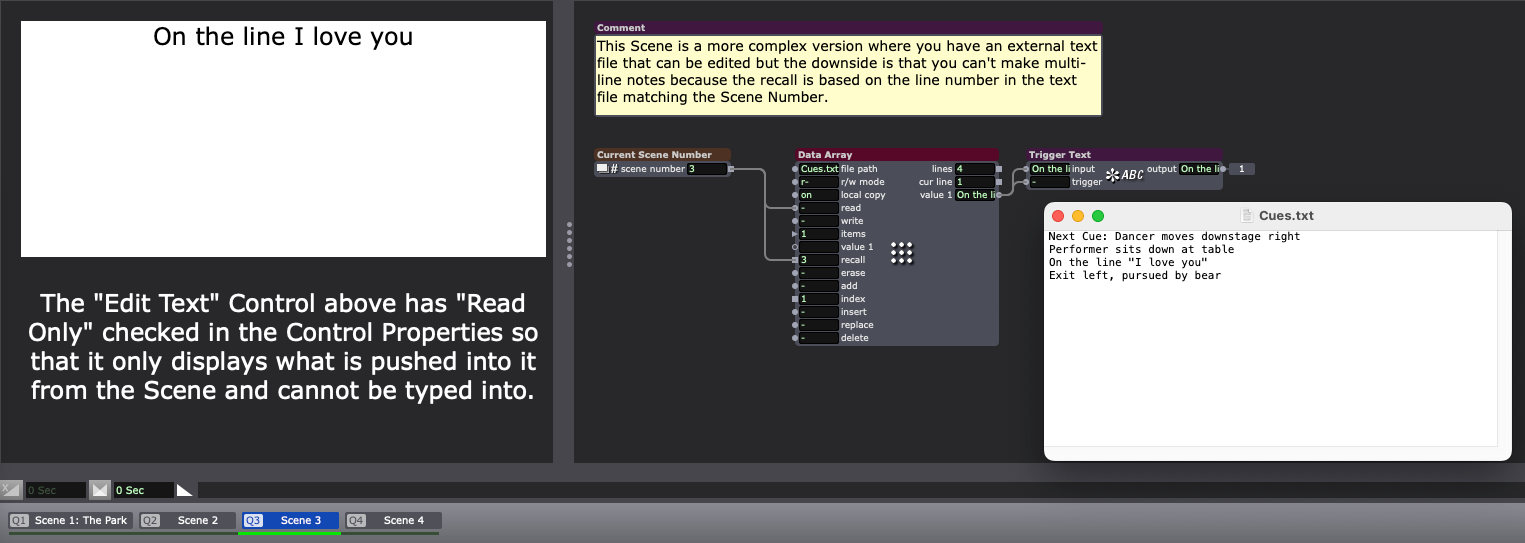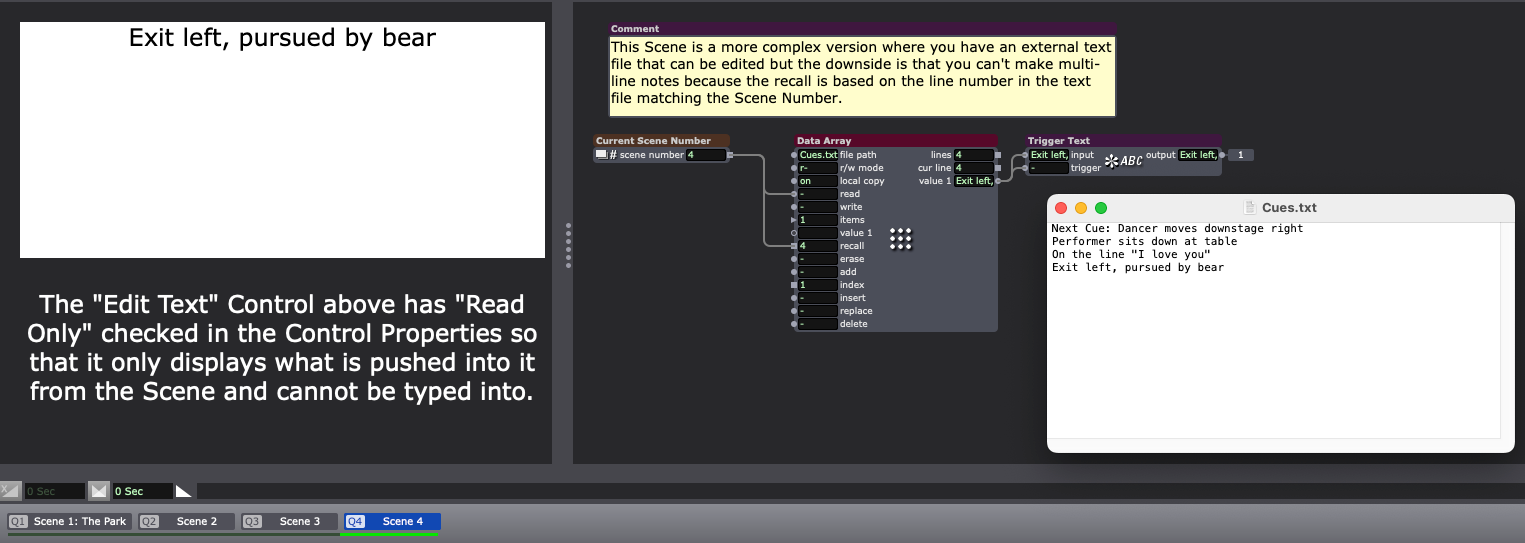Control Panels are a very powerful feature in Isadora, and they can be essential for making a patch easy to use. For that reason, I gathered together a collection of resources for learning about Control Panels in Isadora (which you'll find below). This started out as a response to a different thread, but I figured it might be good to post it on its own.
- Our Isadora 101 Control Panel Youtube Tutorial is the best place to start.
- Here's a much longer, in-depth recorded Control Panel-focused livestream by Mark Coniglio, the creator of Isadora.
- The Isadora 4 Manual (current version at the time of writing this is from October 2024) covers the Control Panel in various places:
- Basic explanation of Control Panels on pages 184-198 (this needs to be updated but is still good information).
- Set Control Focus Actor is covered on page 718.
- Show-Hide Control actor is covered on pages 725-726
- Here's a Show-Hide Control actor example file.
- You can also dissect the complex logic that makes the IzzyCast Basic Template Files' Control Panel act like a full-on application with different views, settings panels, previews, etc.
- Controls Reference Section on pages 829-887
- YouTube Mini Tutorials
- Files to look at:
- The general Isadora Examples files has different Scenes with various Control Panels.
- My simple show file example
- My global projection mapping file
- My Scene-based cue text example file
- My Scaling Isadora Example File
- My Color Tracking Isadora Example Files
- My Simple Q Control Example
- My MIDI Show Control Scene-Navigation & Cueing System
- My CONTROLS Scene and Set/Get Global Values (HSL Adjust) Example
- Many of my example files on the TroikaTronix Add-Ons Page have Control Panels.
- Many of the official TroikaTronix example files on the TroikaTronix Add-Ons Page have Control Panels.
- Lastly, if you want some live help, I personally hold a free 1-hour Isadora Lab via the professional AV community Office Hours Global. The lab is open to anyone (not just AV professionals) and is held via Zoom every Thursday from 7pm-8pm CET (since I'm in Berlin, Germany). Sometimes I help people with projects, sometimes I teach people more about Isadora, and sometimes I teach people about Isadora from scratch. What I do during any given lab is determined by who shows up and what they'd like and I enjoy teaching Isadora to people and helping them with projects regardless of their level of experience with Isadora. Here's the link to get into the Zoom Call: https://zoom.us/meeting/register/tJIocuqsqT8pHNHE6mRQ5gMvhUAwnAd5-I2s#/registration
Best wishes,
Woland
@reload2024 said:
how do I make a neat control panel like that Woland that's inspiring..
A collection of resources for learning about Control Panels in Isadora:
- Our Isadora 101 Control Panel Youtube Tutorial is the best place to start.
- Here's a much longer, in-depth recorded Control Panel-focused livestream by Mark Coniglio, the creator of Isadora.
- The Isadora 4 Manual (current version at the time of writing this is from October 2024) covers the Control Panel in various places:
- Basic explanation of Control Panels on pages 184-198 (this needs to be updated but is still good information).
- Set Control Focus Actor is covered on page 718.
- Show-Hide Control actor is covered on pages 725-726
- Here's a Show-Hide Control actor example file.
- You can also dissect the complex logic that makes the IzzyCast Basic Template Files' Control Panel act like a full-on application with different views, settings panels, previews, etc.
- Controls Reference Section on pages 829-887
- YouTube Mini Tutorials
- Files to look at:
- The general Isadora Examples files has different Scenes with various Control Panels.
- My simple show file example
- My global projection mapping file
- My Scene-based cue text example file
- My Scaling Isadora Example File
- My Color Tracking Isadora Example Files
- My Simple Q Control Example
- My MIDI Show Control Scene-Navigation & Cueing System
- My CONTROLS Scene and Set/Get Global Values (HSL Adjust) Example
- Many of my example files on the TroikaTronix Add-Ons Page have Control Panels.
- Many of the official TroikaTronix example files on the TroikaTronix Add-Ons Page have Control Panels.
- Lastly, if you want some live help, I personally hold a free 1-hour Isadora Lab via the professional AV community Office Hours Global. The lab is open to anyone (not just AV professionals) and is held via Zoom every Thursday from 7pm-8pm CET (since I'm in Berlin, Germany). Sometimes I help people with projects, sometimes I teach people more about Isadora, and sometimes I teach people about Isadora from scratch. What I do during any given lab is determined by who shows up and what they'd like and I enjoy teaching Isadora to people and helping them with projects regardless of their level of experience with Isadora. Here's the link to get into the Zoom Call: https://zoom.us/meeting/register/tJIocuqsqT8pHNHE6mRQ5gMvhUAwnAd5-I2s#/registration
Wow thanks everyone for the great answers and mentioning some actors I can utilize, that was exactly what I was hoping for. I'm sure I'll get it to work now. And man how do I make a neat control panel like that Woland that's inspiring..
@dbini Thanks! Sure enough it does flash when sending and receiving. It just looked different than previous versions so I wasn't sure if was working correctly.
It's not in the Control Panel, but Isadora also has a Cue Sheet function:
https://troikatronix.com/add-ons/working-with-the-cue-list-editor-and-cue-sheets-example-file/
I don't know how this slipped by me, but here's an example file that demonstrates a few methods to do what you want: control-panel-scene-notes-in-control-panel-4.1.3-2025-09-17.zip
Method 1: Text Formatter for more complex notes or inclusion of Scene Name automatically.

Method 2: Simple Gate and Trigger Text

Method 3: Line of text per Scene in external text file recalled with Data Array actor


Oh, also, I've added your text to the existing feature request for an Exit Scene Trigger actor.
I love this idea, but in the meantime here's a patch that notifies a background Scene anytime the current Scene Changes (regardless of how you change Scenes): scene-changed-detection-4.1.3-2025-09-17.iz
I found in my current work that it would be very helpful to have an Exit Scene Trigger (similar to Enter Scene Trigger). Lacking the Exit Scene Trigger compels me to use a Keyboard watcher + Jump + OSC Trigger to turn off the Lasers (controlled by external program). However that only works if I press a Space bar to go to the next scene. If I simply mouse click on an arbitrary scene my Lasers stay on.
Exit Scene Trigger in my setup would be connected to the above OSC trigger to turn off the Lasers and would work regardless of how I exit the current scene.
Thank you.